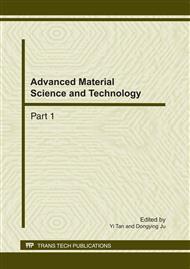p.503
p.507
p.511
p.515
p.521
p.525
p.529
p.537
p.541
Temperature Field Simulation of Nitride Hard Film Irradiated by High-Intensity Pulsed Ion Beam
Abstract:
Surface treatment of hard nitride film with high-intensity pulsed ion beam (HIPIB) was investigated in the present research. On considering the high energy density and short pulse duration of HIPIB source, a one-dimension physical model was built according to the structure feature of film-base sample. It was found that the irradiation of HIPIB lead to a very fast thermal recycle of heating rate 1011K/s and cooling rate up to 1010K/s. The highest temperature located at the surface of film irradiated. When using the HIPIB parameters of accelerating voltage 350kV, pulse duration 70ns and current density 60A/cm2, the surface layer of film would be melt with depth of about 0.35mm, that was verified by the experimental result along with the grain refinement effect due to the fast solidification process.
Info:
Periodical:
Pages:
521-524
Citation:
Online since:
February 2011
Authors:
Keywords:
Price:
Сopyright:
© 2011 Trans Tech Publications Ltd. All Rights Reserved
Share:
Citation:


